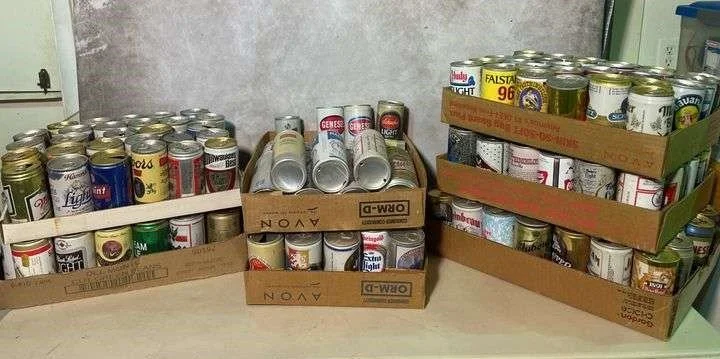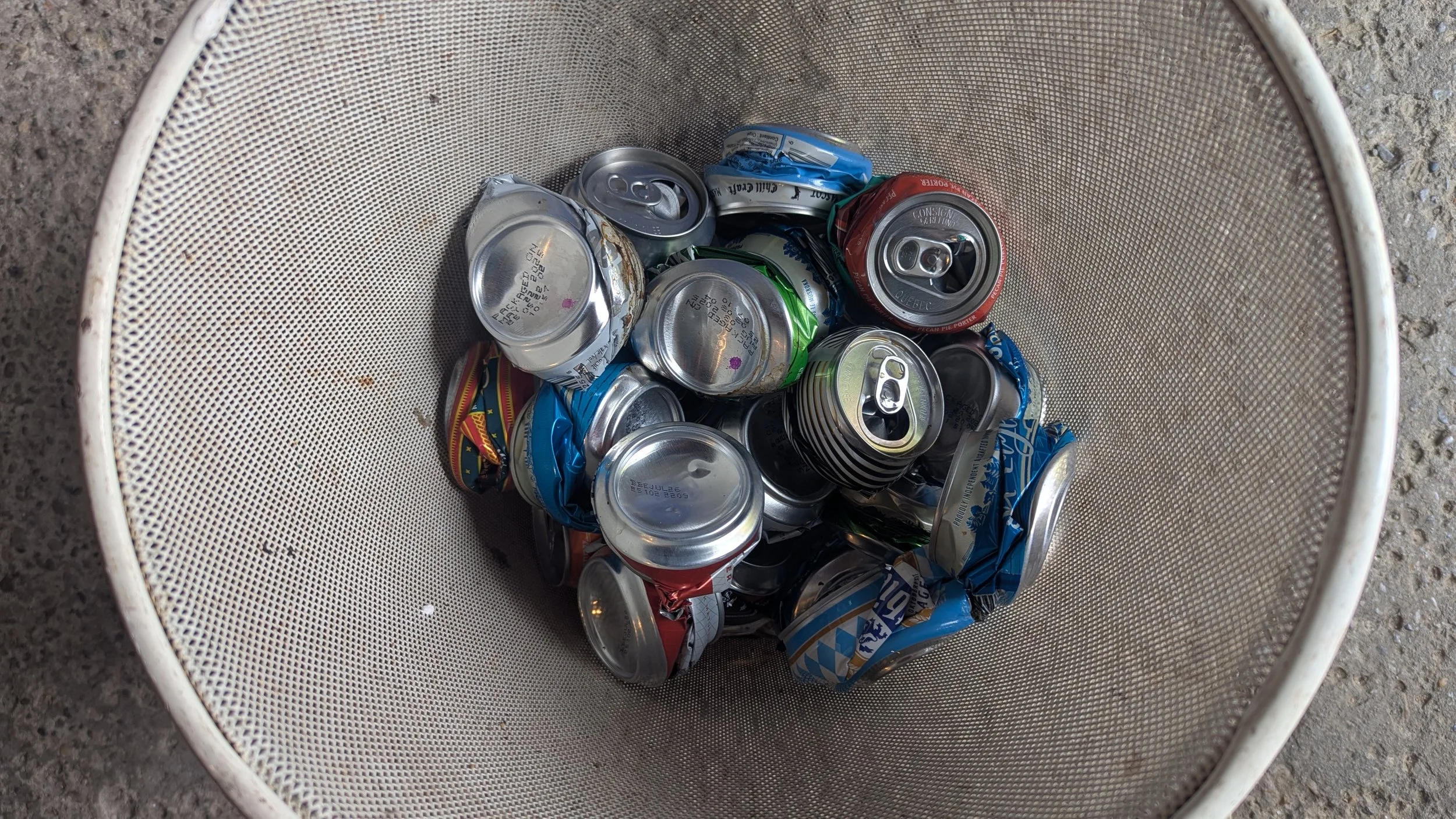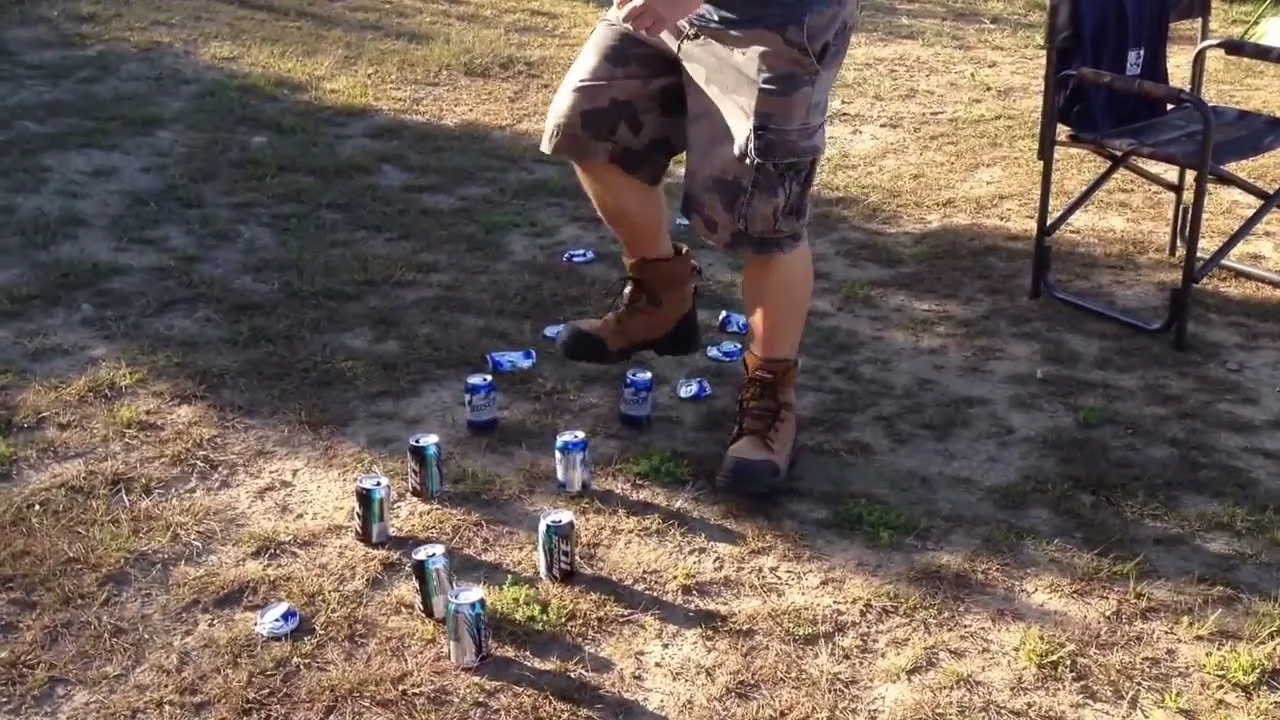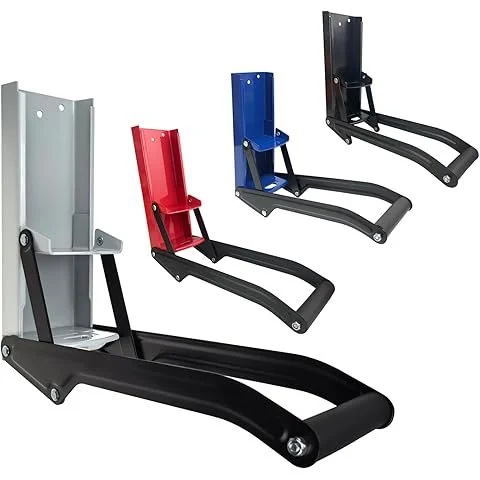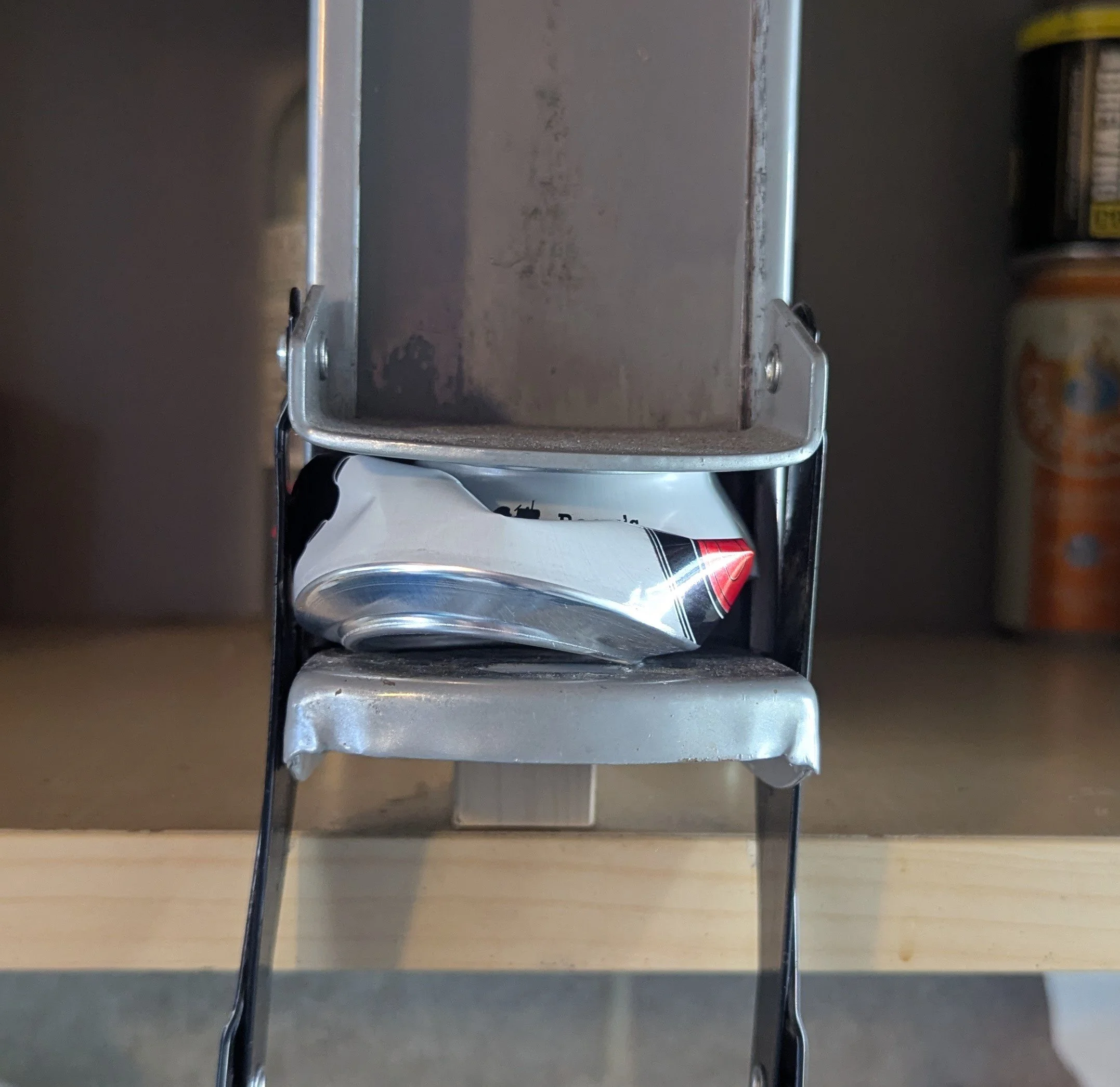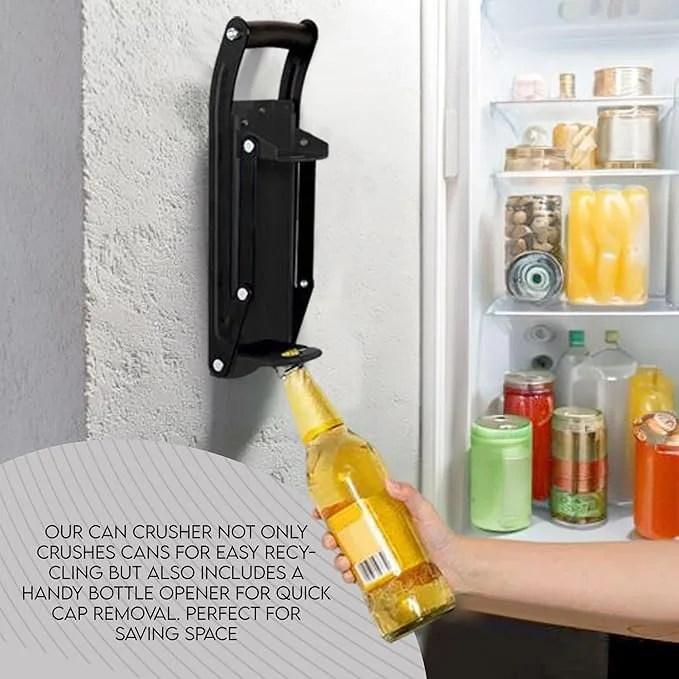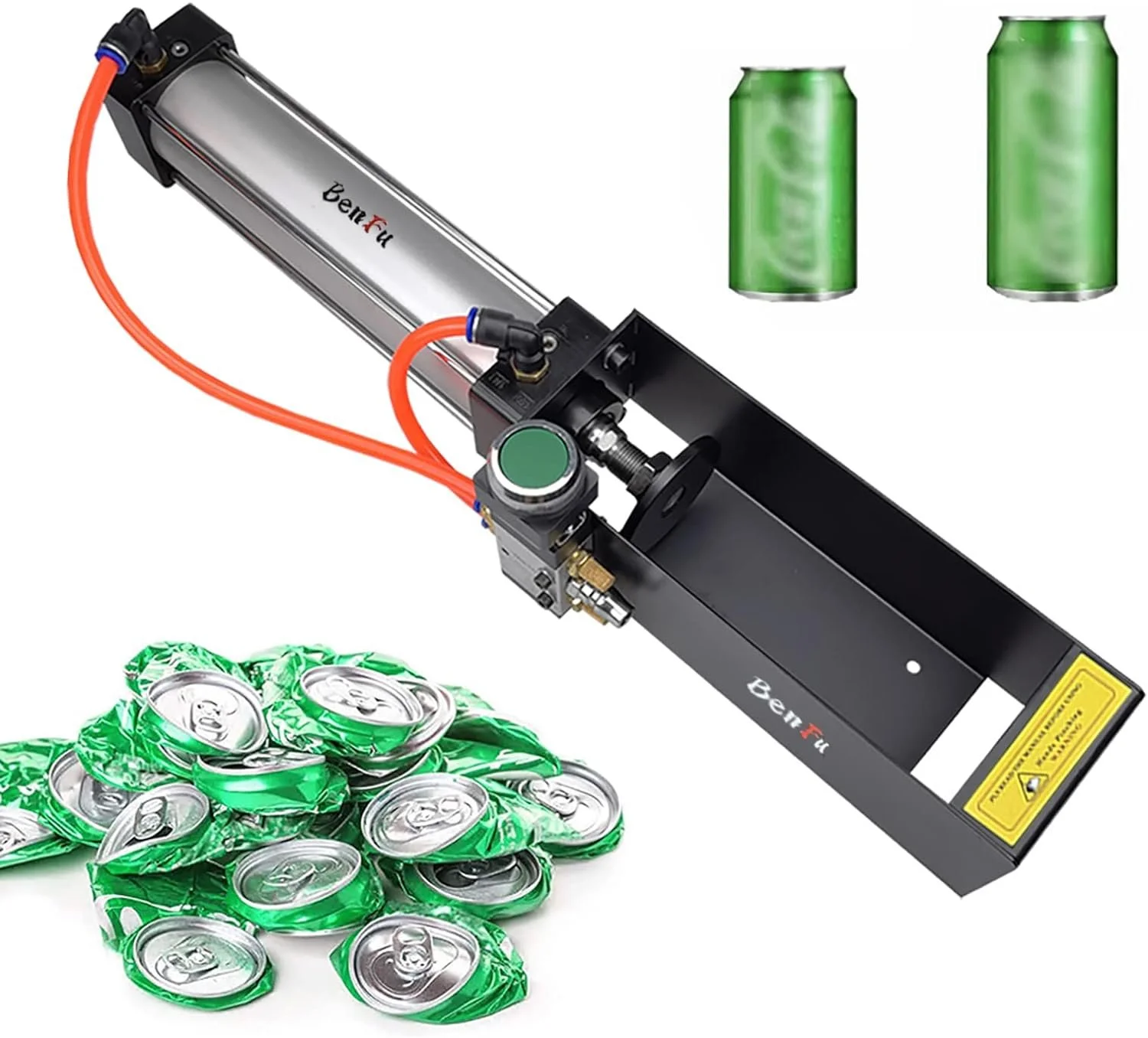I Got a Flat!
I Got a Flat! by Corliss Buenavida
This isn’t a blog about cycling. You may have read my recent exasperated exclamation in the October Monthly Rant, er, I mean Monthly Musings, that I had not been out for a float in quite some time.
I may not be floating as much as I would like to but that hasn’t stopped me from consuming beer.
Something you have to do when you drink a few (or a lot) of cans or bottles of beer is to get rid of them.
Here in Ontario we have a recycling system with a 10 cent deposit on each unit which I can collect by returning my empties to ‘The Beer Store’. This is a business established in 1927 in a deal with the Ontario government to sell beer but also to accept returns for recycling. Originally it was just stubby bottles which the brewers would wash and re-use with a fresh product inside and a new cap and label on the outside. Nowadays they accept all shapes and sizes of bottles, not just for beer but also from the alcohol market. In addition they take a whole array of cans, as long as they were sold with a deposit fee.
Of course, after you finish a beer you are not going to take a trip to The Beer Store for your dime. You are going to accumulate them. If you kept the case or flat they came in after you unloaded them into your beer fridge then you can simply put them back in the packaging. Over a bit of time you begin to accumulate a few of these refilled cases and now you are running out of storage space. That is why it is time to talk about crushing cans.
Even if you are not returning empties for a deposit, crushing cans quickly reduces the empties into smaller sizes to save space in your recycling bin. One possible exception is if you live in a neighbourhood in which street people or as I have heard them referred to, ‘Blue Bin Harvesters,’ collect empties as source of income. I think they appreciate the easier to spot and grab original can shape.
If however, you are stock piling for a ‘big return’ then save space by crushing.
Imagine a flat of tall boys. That is 24 cans which are each just over 150 mm or 6 inches in height, set side by side in 6 rows of 4, creating an approximate volume of 16 liters or 1000 cubic inches - over half a cubic foot. If you had 20 of those cases you might just be able to squeeze them into an average sized coffin. Of course, if you are the only person who created those 20 empty cases then you will need that coffin soon yourself. Moderation wins in the long run!
In any case, if you can crush those cans to just a quarter of their original height about 4 cm or 1.5 inches you could fit 80 cases worth of empties into that coffin.
Fortunately, most of us don’t have coffins lying around to gather empties in and who wants to collect that many cans when you can just return a few in a smaller batch the next time you go purchasing fresh brews.
Along that line of thinking, just a bucket, bin or bag might do the trick.
Here is a little side story from the old days when cans were a rarity and stubby bottles the norm. We would buy our beer in 24 bottle cases, a two-four, in a fairly solid corrugated cardboard case with a thin cardboard divider grid inside which stopped the bottles from rattling against each other. This made it easy to tote on your shoulder for those of us who didn’t have other means of transportation at the time. Once the bottles were empty, you would just plop them back down in their divisions for an easy return.
On a side note to this side note, when an empty bottle is filled about a quarter full with gas siphoned from a car’s gas tank and a piece of that cardboard packaging is stuffed into the neck and then lightly doused with said gasoline via a quick twist of the wrist then you have created a Molotov cocktail.
I wouldn’t know anything about that, except, you won’t need to return those empties.
Anyway, some pals of mine who lived in a house together decided to keep their empties for a good span of time to the point that they were able to fashion some furniture out of the empty filled cases (that sofa definitely needed cushions) and when they finally did take the truck load in for deposit return it made headlines in a local paper.
All these visions of the past reminds me that prior to twist off caps, when we were without an opener (rarely) we might have to use a cabinet or table edge to pop-a-top. However when nothing of that nature was within our means we also opened bottles with our teeth. I’m not sure my parents appreciated the extra dental visit.
“But how do I crush beer cans, Corliss?”
Great question reader! And thank you for getting me back on track. (I might have had an acid flashback a moment ago.)
If you were to ask Bluto, John Belushi’s character from the film Animal House, he may offer up a forehead crunch.
My recommendation in the past would have been safer than that, as long as you were wearing sturdy footwear - stomping.
Now, in this age of technological advancement, I urge anyone wishing to flatten their empties to install a manual wall-mounted can crusher.
It is simple to operate and gives you such a feeling of great power when you give the handle that pull and hear the screechy crunch of metal as you reduce that tall mass to a puny disc before tossing it into your collection bin.
There are a few basic principles to follow to make a crusher work at its best for you.
Although only a few screws are required, mounting placement needs to be on a firm surface and you will want to locate it at a height which allows your arm to swing through a full crushing motion easily. The vicinity is also a key factor as you don’t want it far from your gathering point.
Both of my crushers are located right beside my beer fridges. In Toronto, I have it mounted on a shelf unit in the garage while at the Villa in Nicaragua it is in the kitchen bodega. In both cases I can toss each ‘crush’ into a bin or bag until I have enough to get them to my local recycling process. In addition I have a shelf space where I can accumulate cans prior to crushing. I do this because I want the can to be dry of its prior contents before I split its sides open. Nobody wants a squirt of stale beer to land on their new shirt!
I try to create a simple routine and also instill it into any guests who might be participating in the procedure. For example; I have finished a beer but wish to return to my float to continue to enjoy the afternoon. After a quick pat down to dry off a bit I will pour off any remaining backwash into the garden or sink on my way to the sanctum of the crusher. Upon arrival that can gets placed on the shelf and another can which was set down a day prior, for final evaporation, gets placed in the crusher. After the ‘rush of the crush’, I toss the newly made disc in a bin and open the beer fridge to seek my next victim. Repeat as necessary.
Here is a helpful hint for first time crushers. When you place the can into the crusher give a little push into the side of the can about a third up from the bottom. This will make pulling the lever down so much easier.
If you have the storage space you may want to keep all your other beer paraphernalia in the same locale. Koozies for individual beer can or bottle insulation and a cooler or ice chest for when you are taking some wobbly pops for a visit with friends or a beach day. You may want to keep an opener there too for those travels, you shouldn’t need one for opening a bottle in that location because most wall mount crushers have an opener built into the bottom.
There are a lot of options for purchasing a crusher on-line or you can grab one at a retail outlet such as Canadian Tire in Canada. When you do your shopping make sure it is strong and that it accepts tall cans because some are sold strictly for soda pop can size containers although I have never seen this application in effect myself. You will also want a cushion grip handle and you may want to buy a set of gloves too because of the sharp edges revealed after crushing though I have never received as much as a nick through many years of use.
There are also electric or pneumatic can crushers on the market but I can’t see a need for this extravagance for the common beerfloater.
DIY folks may want to craft their own unit with many instructions available via your interweb learnin’ machine.
Okay, you’ve crushed a bunch of cans, now what?
In Nicaragua I give them to my cuidador for him to sell to a local metal purchaser who drives down all the streets of town announcing his presence through a loud speaker. I previously wrote about this cacophony and other such audio disturbances in the tropics in a blog ‘Make Some Noise.’
Once my bodega bin has gathered a good crop I will dump them into an old garbage bin we have outside specifically for these metal empties which when full will yield a trifling sum, but a sum none-the-less.
Crushing saves so much space that in Canada, I will count out sets of 50 into old plastic grocery bags which I return to The Beer Store every few months. Say I have 5 bags of 50 cans worth 10 cents each, that’s 25 bucks that can go toward a fine selection of craft beers.
I know a couple of amigos who have place their hands on my device (ooh) and then gone out and got their own. Check out our beerfloat.calm merch options.
Get your hand on a crusher!
Corliss
beerfloat.calm = beerfloat.net not beerfloat.com

